Mongolia is a wonderful country where you can experience an extraordinary connection between the ancient culture and the motherland Chinggis-Khan. The population has delivered culture and nomads way of life to this day. You experience clear skies and untouched wild nature in the countryside. Nowadays the world is changing and Mongolia is well considered less destination in the world that can offer old customs and customs, traditional and untouched wild nature.
Mongolia is located in the middle of central Asia between China and Russia. The population are in the countryside sparsely settled, simple nomads’ lifestyle and hospitality, which were little changed in previous millennium.
Mongolia and its high mountains, crystal clear lakes, steppe, desert Gobi and rivers offer diverse activities. If the adventure seeker who has been interested in the nomad family culture and who offer you a living history, unforgettable moments in Mongolia. The more you know about the country and customs, the better your journey will be. Whether you travel privately or as groups in Mongolia. 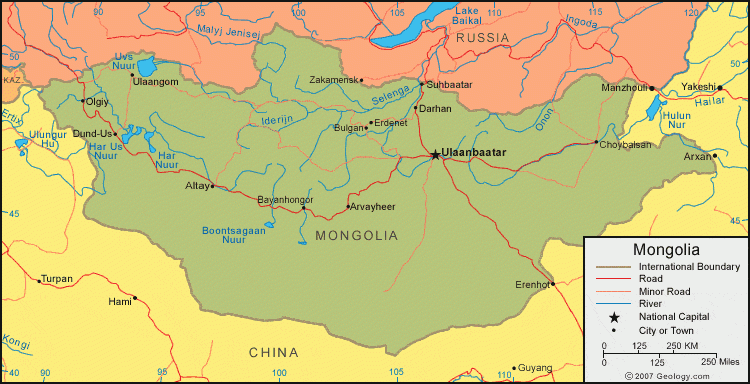
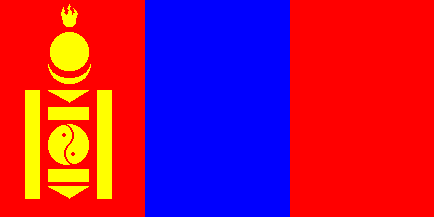
|
Official language: |
Mongolian |
|
Surface: |
1,564,116 km² |
|
Population: |
3,177,899 (estimate March 2019) |
|
Capital: |
Ulaanbaatar (population: 1,462,973) |
|
Government: |
Parliamentary republic |
|
Government System: |
Republic, Parliamentary democracy with constitutional constitution. Every 4 years, the president becomes and parliament elected / |
|
Voting qualifications: |
All residents are at the age of 18 |
|
Currency exchange: |
Tugrug (MNT) The tugrug or tugrug is the official currency of Mongolia and its code is MNT and currency symbol is. |
|
Important religions: |
54% Buddhists, over 4% shamanism and 30% atheists. Others are Christians and Muslims |
|
literacy: |
Very high 92.9% |
|
Culminating in the Mongolia: |
Desert Gobi, steppe land, salty and fresh water lakes |
|
The highest mountain peaks: |
The Khuiten peak 4374 meters. |
|
The product industry and the mining industry: |
Food industry, textile industry, leather industry, chemical Industry, building industry, flour industry, gold mines and metal industry |
|
Agriculture and animal husbandry: |
Cereals 7 species, wheat, vegetables, potatoes, wool and cashmere Industry for goat, create, camel and yak, horses. |
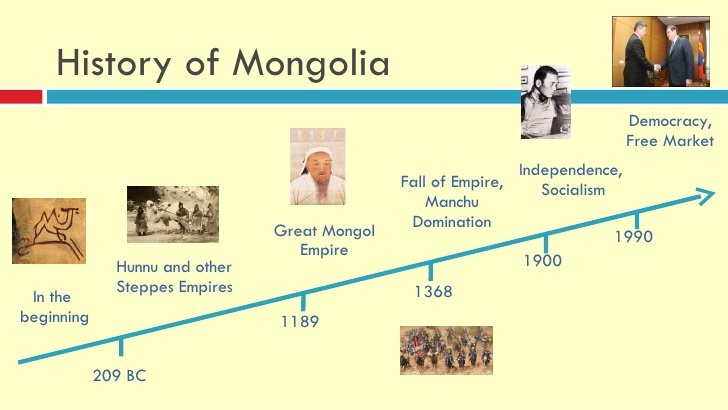
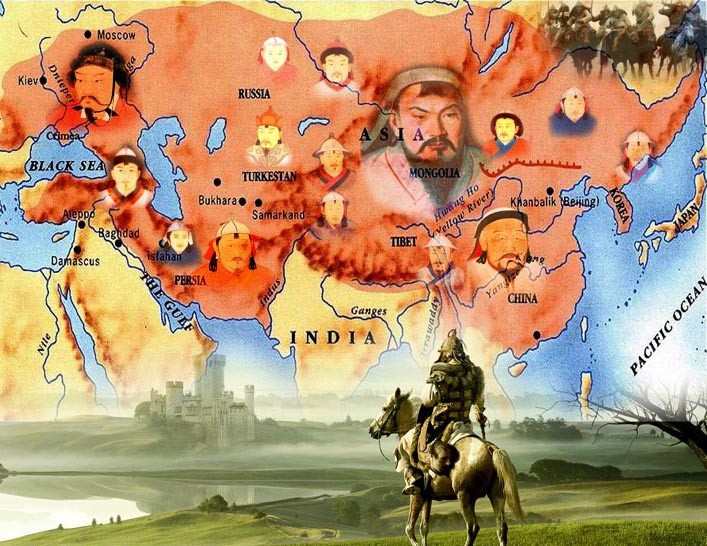
A large number of ethnicities have inhabited Mongolia since prehistoric times. Most of these people were nomads who, from time to time, formed confederations that rose to prominence. The first of these, the Xiongnu, were brought together to form a confederation by Modun Shanyu in 209 BC.
In 1206, Chinggis Khan (also known as Genghis Khan) founded the Mongol Empire, the largest empire in history. The Mongol Empire’s territory extended from present-day Poland in the west to the Korean peninsula in the east, from Siberia in the north to the Arab peninsula and Vietnam in the south, covering approximately 33 million square kilometers. In 1227, after Chinggis Khan’s death, the Mongol Empire was subdivided into four kingdoms. In 1260, Chinggis Khan’s grandson, Kublai Khan, ascended the throne of one of the four kingdoms that encompassed present-day Mongolia and China. In 1271, Kublai Khan formally established the Yuan Dynasty. The Yuan Dynasty was the first foreign dynasty to rule all of China until it was overthrown by the Chinese Ming Dynasty in 1368.
The Mongol court returned to its native land, however, centuries of internal conflict, expansion and contraction brought them fall into Manchu Qing dynasty. They conquered Inner Mongolia in 1636. Outer Mongolia was submitted in 1691. For the next two hundred years Mongolia was ruled by the Qing Dynasty until 1911. Mongolia declared its independence in 1911 under the Bogd Khan, the spiritual leader of Mongolia’s Tibetan Buddhism. However, the Chinese government still considered “Outer Mongolia” as part of it and invaded the country in 1919.
In 1921, People’s Revolution won in Mongolia with the help of the Russian Red Army and thus Mongolia became the second socialist country in the world. After Bogd Khan’s death in 1924, the Mongolian People’s Republic was proclaimed and the first Constitution was adopted.
Mongolia was under a Soviet-dominated Communist regime for almost 70 years, from 1921 to 1990. In the fall of 1989 and the spring of 1990, new currents of political thought began to emerge in Mongolia, inspired by the glasnost and perestroika in the Soviet Union and the collapse of the Communist regimes in Eastern Europe. In March 1990, a democratic revolution that started with hunger strikes to overthrow the Government led to the peaceful renouncement of communism. Mongolia’s renouncement of communism led to a multi-party system, a new constitution and a transition to a market economy.
Over the past two decades, Mongolia has transformed itself from a socialist country with a planned economy into a vibrant multi-party democracy with one of the world’s fastest growing economies.
Mongolia is the world’s second largest landlocked country and occupies a territory of 1.56 million square kilometers. Mongolia is located in Northern Asia, bordered by Russia in the north and China in the south, east and west. Mongolia is the world’s least densely populated country, with a population of more than 3.1 million people living in a vast area of 1.56 million square kilometers. Ulaanbaatar is Mongolia’s capital and largest city and home to approximately 45% of the country’s population.
Ethnic Mongols comprise approximately 94.9% of the population, Kazakh 5% and Turkic, Chinese and Russians make up the remaining population.
Buddhism is major religion in Mongolia with a small number of Muslims, Christians, and Shamans reside in Mongolia.
The official language is Mongolian and is spoken by 90% of the population. English is quickly replacing Russian as the most popular language following Mongolian. Many Mongolians also speak Korean, Japanese, Chinese, German and other western European languages.
Mongolia was divided into 6 different zones due to climatic conditions, high mountain zone, mountain gait, mountain forest steppe, steppe, desert steppe and desert. And through the north of Mongolia, the watershed of Asia runs. Each land zone has its own miracle. And the desert Gobi occupies most of the south and east. Mostly land is used for agriculture. 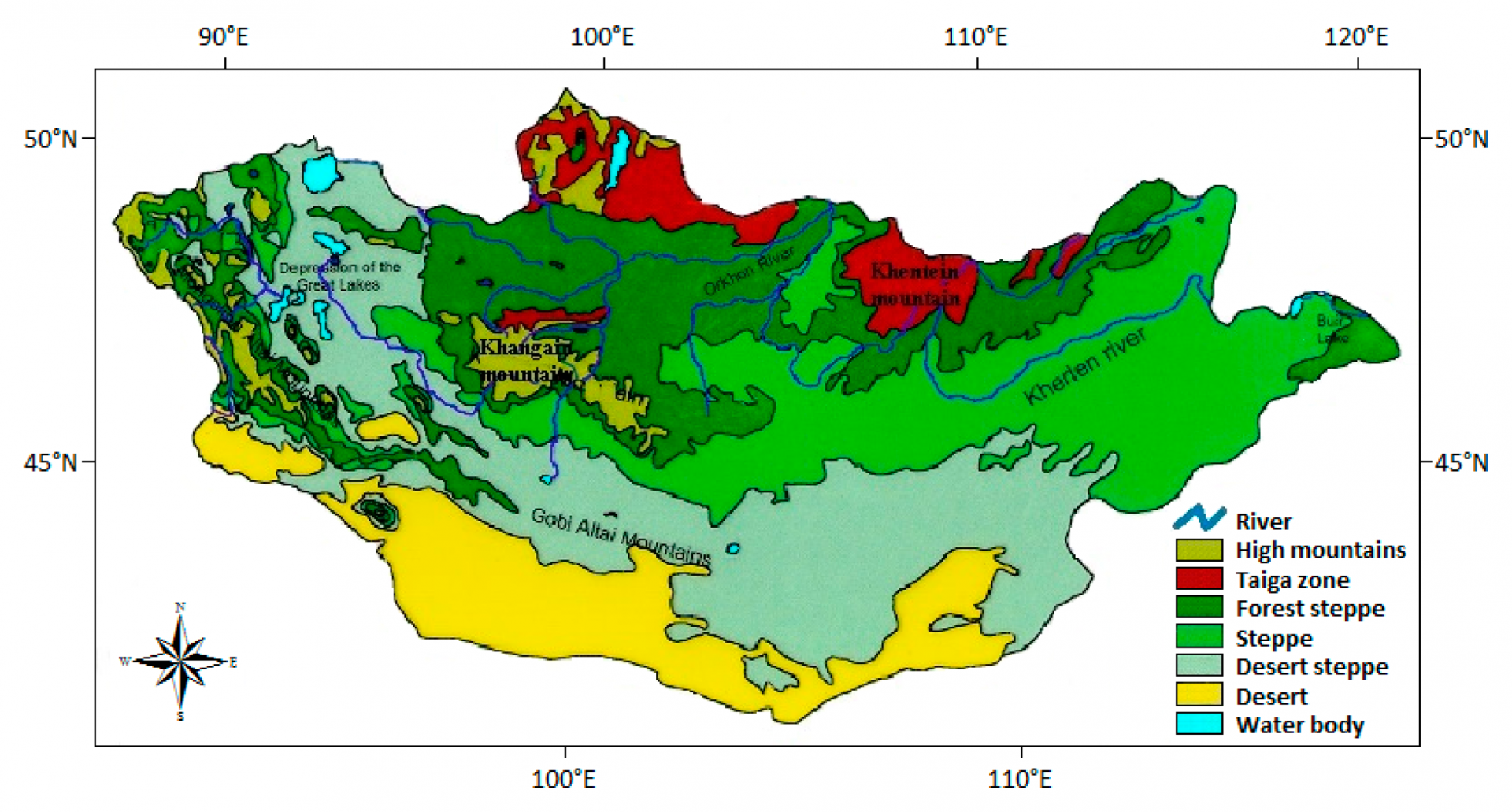
High Mountain Region
Above 2000 meters, almost only lichens and mosses grow. Now and then there are rare species of plants that only grow to this height. The tree line is 2000 meters high.
Taiga area
Taiga is the northernmost forest landscape. The most grown trees are: Siberian larch, Scots pine, Siberian stone pine, Manchurian birch, fir and Siberian spruce. Along the larger rivers grow pastures and aspens species. Because of the permafrost, the soil is rather swampy. Here you can find special types of flowers, such as edelweiss, gentian, pasque and orchids.
Mountain forest steppe
The northern slopes of the mountains are covered with larks and the southern slopes are covered with steppe vegetation. In addition, rich spring grass and various types of herbs grow over a short summer. In the main growing season, you can see lush flower-pots, with all sorts of herbs.
Prairie
Feather grass, wormwood, onion plants and many sweet and sour grasses are the main representatives of the steppe plants. It is a mixture of wet and dry steppe.
Desert steppe
The more southern the plant cover thins out. There is almost no perennial meadow. Most grown plants are bushy and thorny shrubs. It is raining very little in this area.
Desert
Majority of the desert is gravel and rocky desert. Vegetation is very thin. The plants are sparsely grown but very nutritious for the animals. Saxaul is an important plant species in the desert. The roots of Saxaul go down to 25 meters deep in the earth to fetch water. With its thick needle leaves, it feeds many animals. And besides, it serves as a windbreak for the animals.
Mongolia is a land of extremes. There is a strong continental climate. Humidity is very low, 80-90% of precipitation falls from May to September. With over 260 sunny days a year, Mongolia is one of the sunniest countries in the northern hemisphere. Long arctic winters are a normal thing, even in the Gobi Desert, the snow remains in April. Elsewhere, lakes are frozen until June. The summers are generally warm at an average of + 20 ° C. In the Gobi but you have to expect even extreme temperatures up to + 40°C. As soon as the sun goes down, the thermometer shows quite cool and fresh conditions. Until the beginning of June and then again from the beginning of August you can expect frost at least at night, in the evening the freezing point can be reached in the evening. The temperature differences between day and night are extreme and can be up to 32 C. Mongolia is a windy country, especially in spring. Especially with north wind the temperatures fall very fast. Do not underestimate the extremes of Mongolia: One day you can wear T-shirts and sandals, but in the evening or the next day you have to slip into thick wool sweaters and socks. It can snow in the mountains in June and September. Especially in the higher dormitories possibly expect snow! It is also very windy at times. Rain comes and goes. The showers are usually rather short. 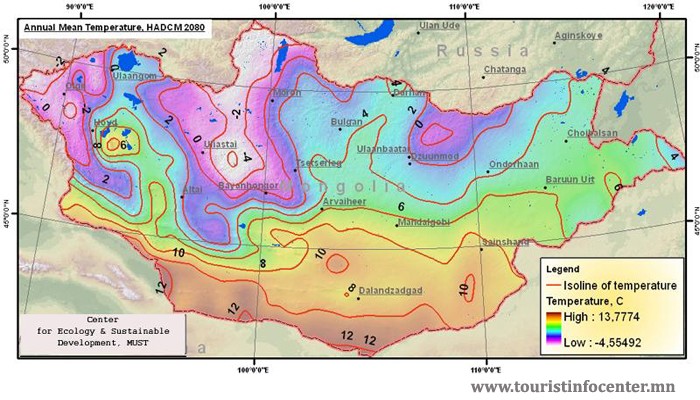
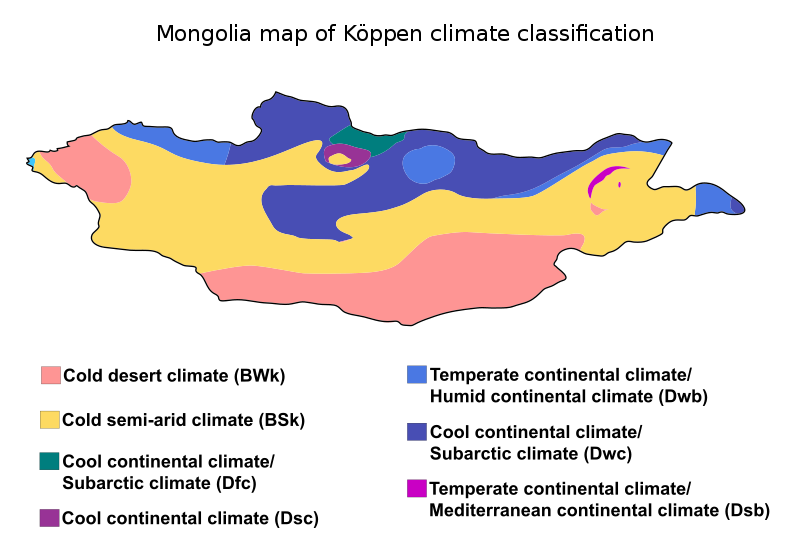
Meat is the basis of the diet, primarily mutton, with goat, horse, camel and yak meat, dishes also on offer. Rice, flor, potatoes and onions are other main ingredients while green vegetables are rarely encountered outside the capital. The local cooking is quite distinctive.
Specialties
Traditional meals generally consist of boiled mutton with lots of fat and flour with either rice, pasta, noodles or dairy products.
Boodog is the whole carcass of a goat or marmot roasted from the inside-the entrails and bones are taken out through the throat, the carcass is filled with burning hot stones and the neck tied tightly, and thus the goat is cooked from the inside to the outside.
Khorkhog is popular in the Mongolian countryside. This meal consists of chopped up goat, potatoes and onions slowly steamed inside a metal container. Scalding hot rocks are placed inside the container to create the steam and once extracted it is customary to pass the stones from hand to hand.
Buuz is the national food; a steamed dumpling filled with mutton. These are eaten in great quantities during the Tsagaan Sar (New Year) festival. You can find buuz in restaurants throughout Ulaanbaatar.
Khuushuur is another popular food item. This deep-fried mutton pancake is particularly popular during the summer Naadam festivities.
Airag-Vergorene Mare's milk: Airag is the traditional Mongolian national range. The horses are the most important animals in Mongolia and are not only used as riding horses, but also the mare's milk has a special status. 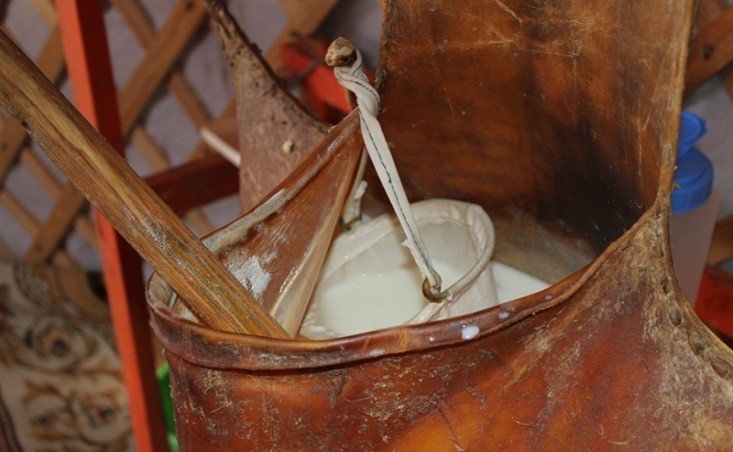
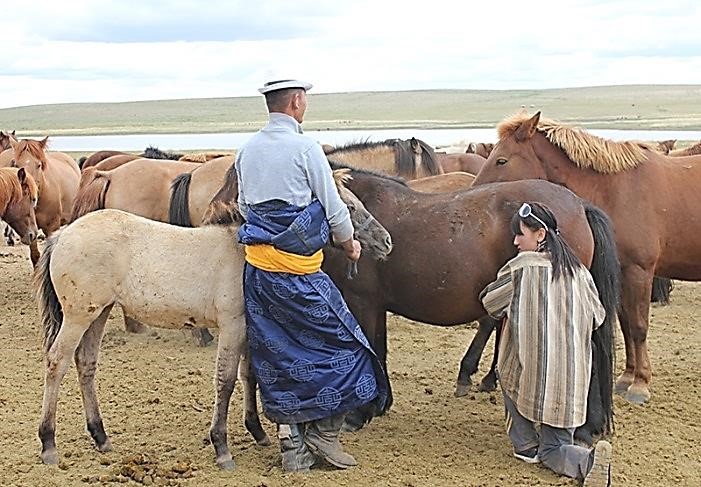 The preparation: The milked milk is placed in an open leather bag, which usually hangs next to the entrance of Ger. In it, the milk is vigorously stirred with a wooden rammer for some time. This process is then repeated regularly. It is a tradition that anyone who enters into Ger briefly stirs Airag in his jar. As with kefir, fermentation occurs due to a combination of lactic acid bacteria and yeast fungi. By stirring a uniform fermentation is ensured.
The preparation: The milked milk is placed in an open leather bag, which usually hangs next to the entrance of Ger. In it, the milk is vigorously stirred with a wooden rammer for some time. This process is then repeated regularly. It is a tradition that anyone who enters into Ger briefly stirs Airag in his jar. As with kefir, fermentation occurs due to a combination of lactic acid bacteria and yeast fungi. By stirring a uniform fermentation is ensured. 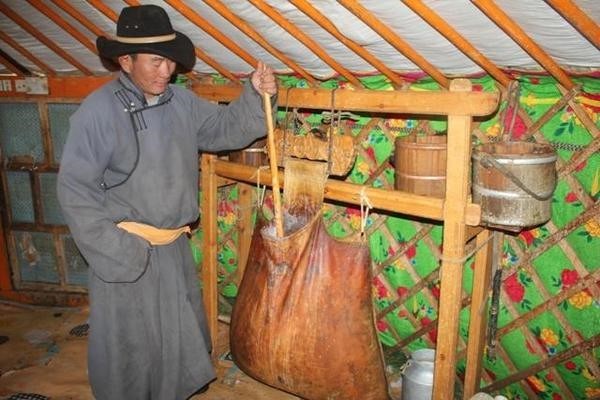
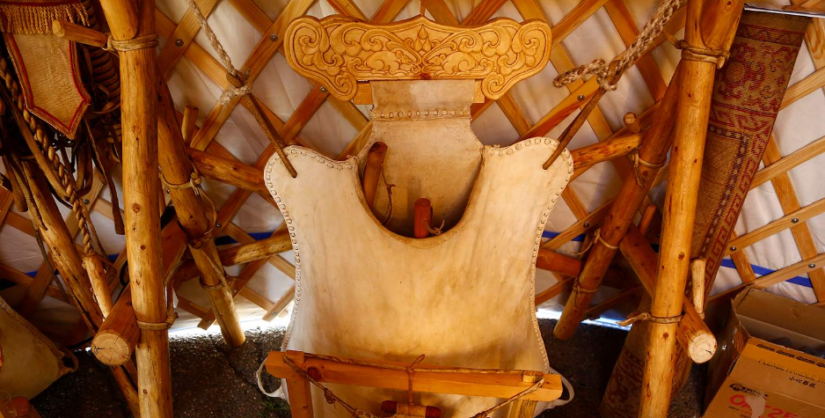 Use: Airag refreshes and tingles on the tongue. It contains some carbon dioxide and up to 2% alcohol. The taste is slightly sour, but after a little habituation quite pleasant. In particular, it depends on the food of the animals as well as on the exact method of production. The drink is for the nomads a rich source of vitamins and trace elements. The hospitality dictates that every visitor should be presented with a bowl of Airag. A Mongolian will usually drink it, but it's okay to just sip it symbolically, and then give it back. The gift of rejecting completely would be rude but rude!
Use: Airag refreshes and tingles on the tongue. It contains some carbon dioxide and up to 2% alcohol. The taste is slightly sour, but after a little habituation quite pleasant. In particular, it depends on the food of the animals as well as on the exact method of production. The drink is for the nomads a rich source of vitamins and trace elements. The hospitality dictates that every visitor should be presented with a bowl of Airag. A Mongolian will usually drink it, but it's okay to just sip it symbolically, and then give it back. The gift of rejecting completely would be rude but rude! 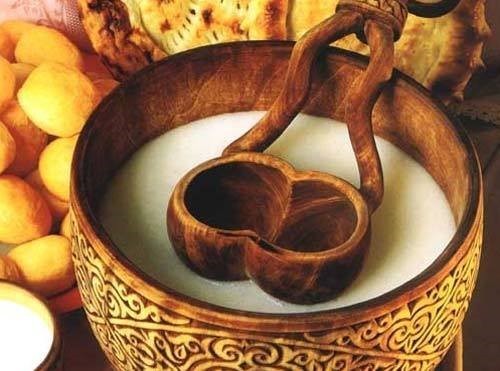
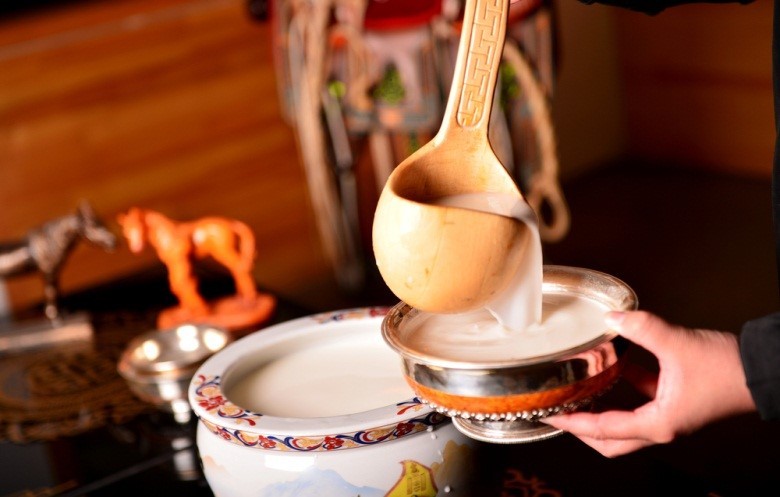
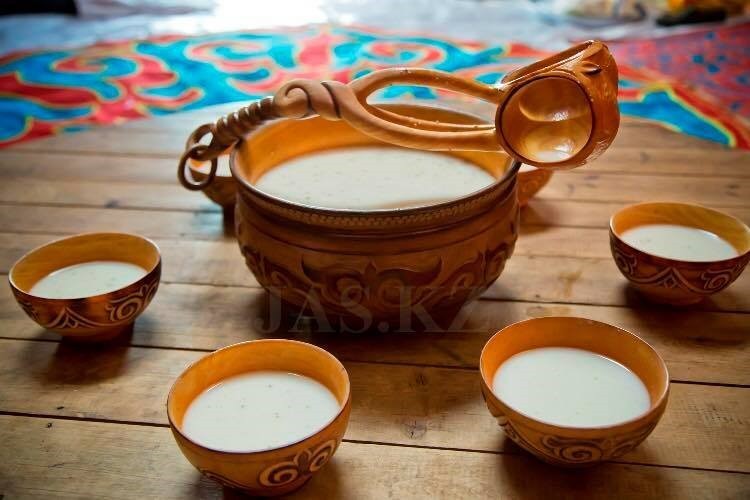
The flora of Mongolia is so abundant and grows here nearly 3000 species of plants, including more than 800 medicinal plants that are used in traditional medicine. Mongolia is home to 138 mammal species, 434 different species of birds, 76 species of fish, 22 reptile species, and 13,000 species of insects. 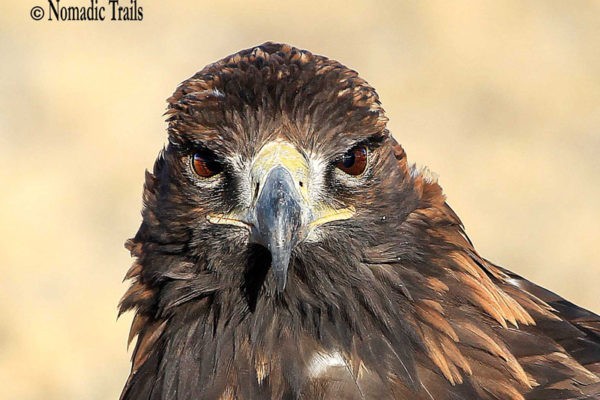
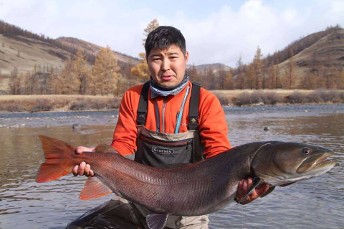
Tsagaan Sar
The biggest festival of the Mongols is Tsagaan Sar or the New Year. The word "Tsagaan Sar" in English means "white moon". The color white is a symbol of purity and happiness. The festival takes place between January and February, the exact date of which is determined annually according to the lunar calendar. On New Year's morning "Shiniin Negen", the Mongols gather with the family elders or parents and greet each other with very special welcoming rituals. So together they welcome the coming year with much happiness and joy and ask for divine assistance for the New Year. On the following days, they visit all family members, relatives and acquaintances. The table is richly covered with banquets, which consists of several layers of "Kheviin Boov" (slightly sweet, deep-fried dough), various salads, steamed mutton rump or beef breast and of course the Mongolian traditional dinner Buuz (meat-filled dumplings). In the days before the beginning of the festival, the Mongols clean their homes, Gers and land and meet the new year with clean or new clothes, plenty of food and a friendly smile. 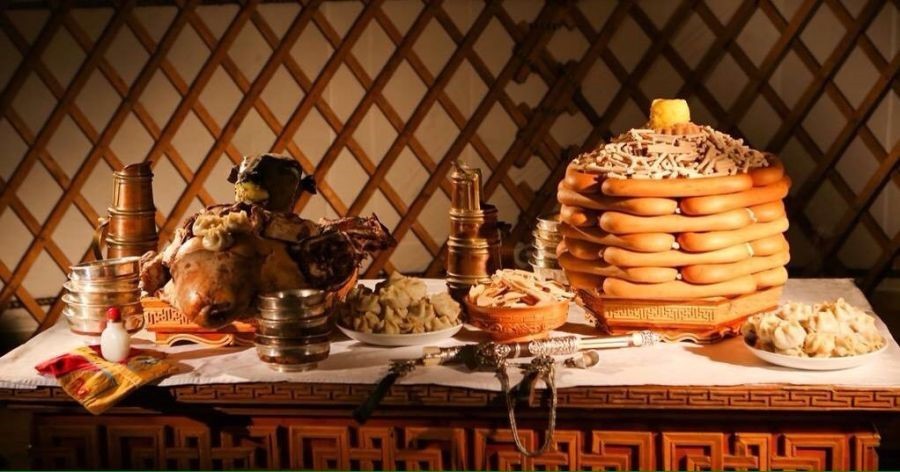
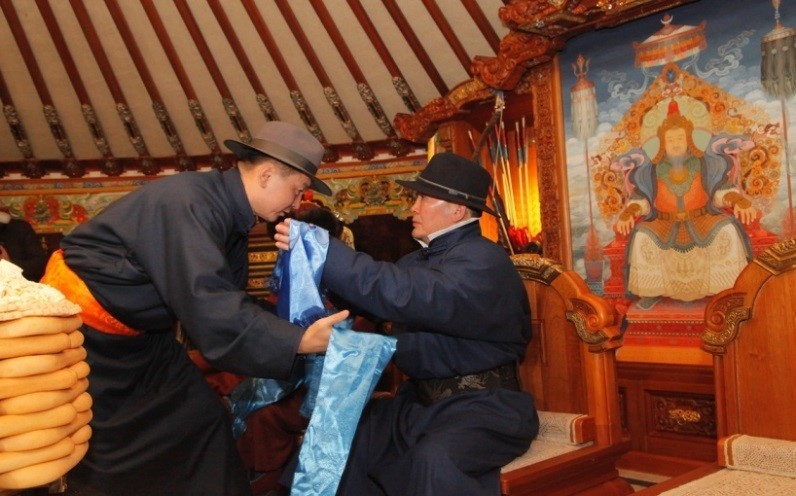
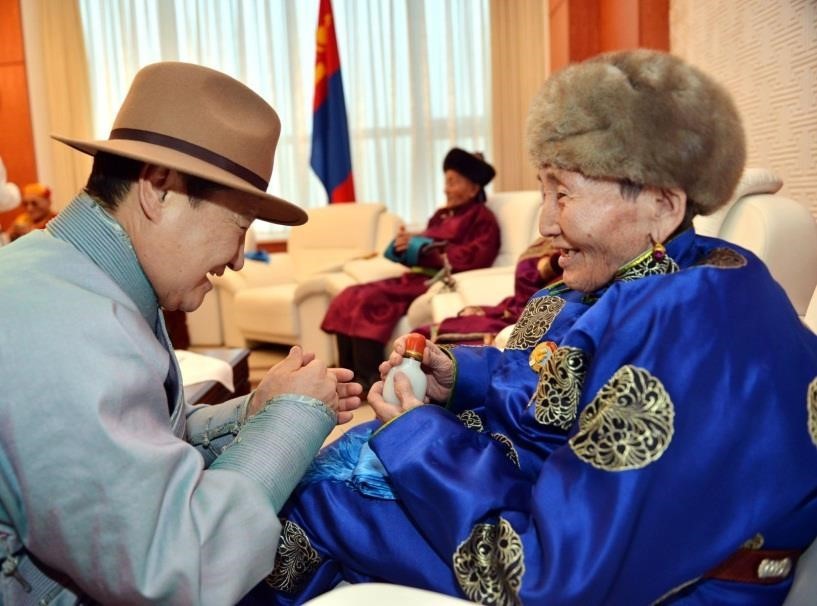
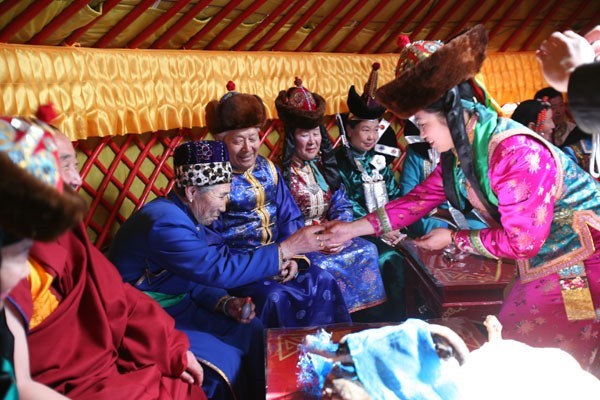
The Naadam festival
Naadam is the national festival of Mongolia and takes place annually from the 10th to the 13th of July, with the official opening ceremony on the 11th of July and the official closing ceremony on the 12th of July. The full name is Eriin Gurwan Naadam (The Three Male Games). The origin of the festival presumably goes back to the Kuriltai clan meetings, which were social highlights in the Middle Ages. The July 11th was later redeployed as the National Day's Revolutionary Day and commemorates the country's declaration of independence in 1921. The Naadam Festival is primarily a sports event similar to the Olympics. The Mongols compete in the three traditional Mongolian sports: wrestling, archery and horse racing. 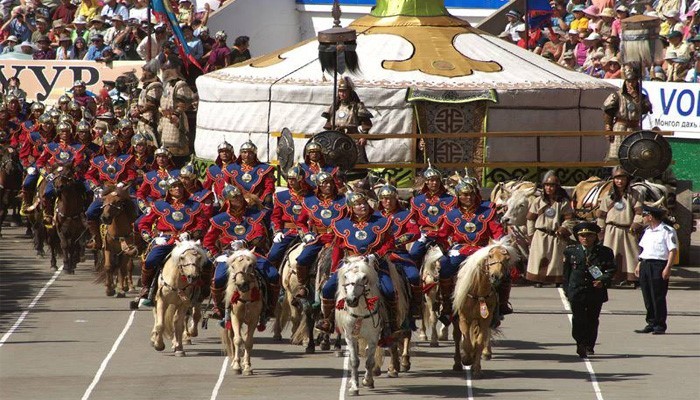
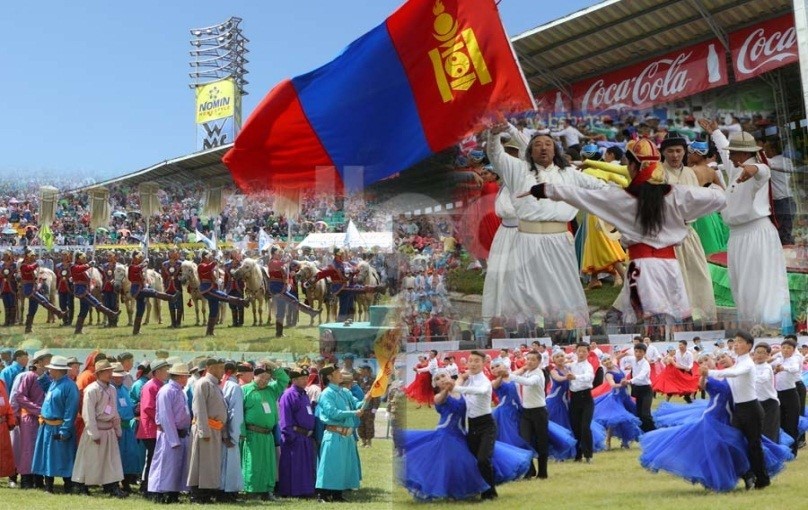
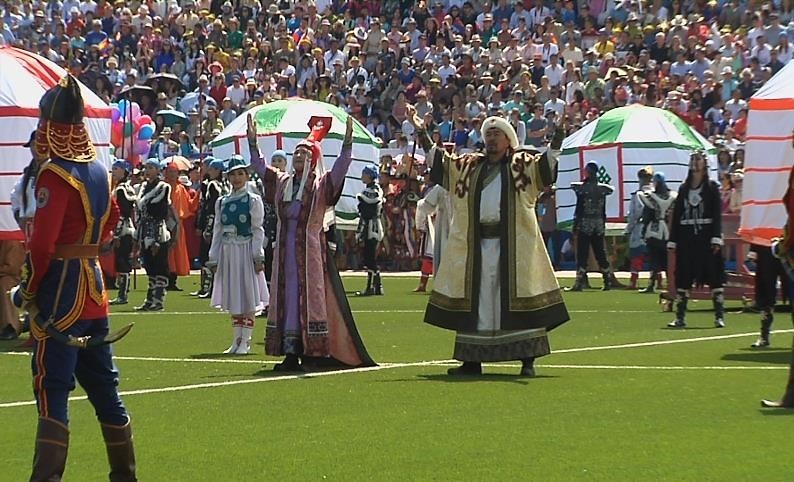
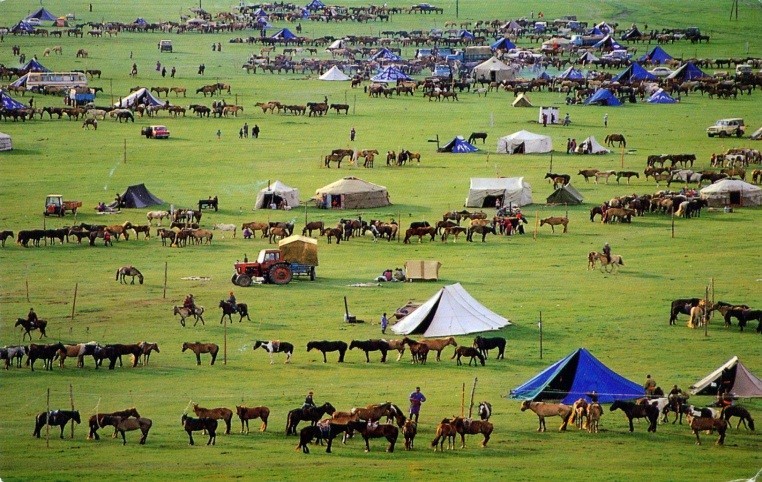 Wrestling: The wrestling match will take place in the men in nine competition rounds if 512 cattle should play and if there are 1024 wrestlers, it will be played ten rounds. The titles (Nachin), Elephant (Zaan), Leo (Arslan, and Champion (Avarga) can be obtained, and the title will be awarded by the Mongolian President at the Central Stadium on July 12. The children compete in seven competition rounds.
Wrestling: The wrestling match will take place in the men in nine competition rounds if 512 cattle should play and if there are 1024 wrestlers, it will be played ten rounds. The titles (Nachin), Elephant (Zaan), Leo (Arslan, and Champion (Avarga) can be obtained, and the title will be awarded by the Mongolian President at the Central Stadium on July 12. The children compete in seven competition rounds. 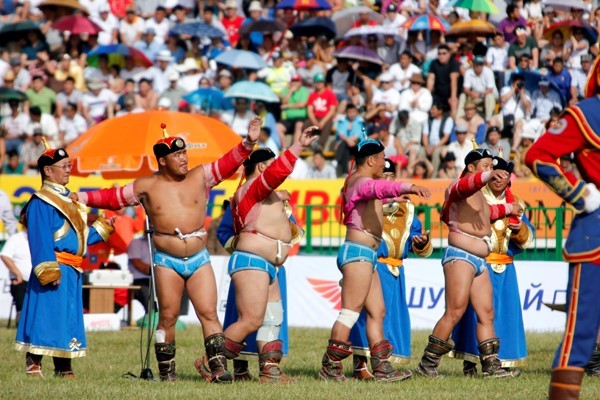
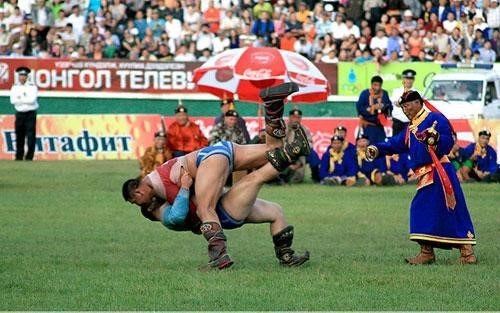
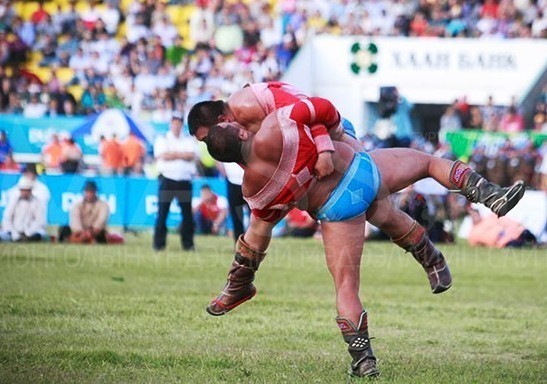
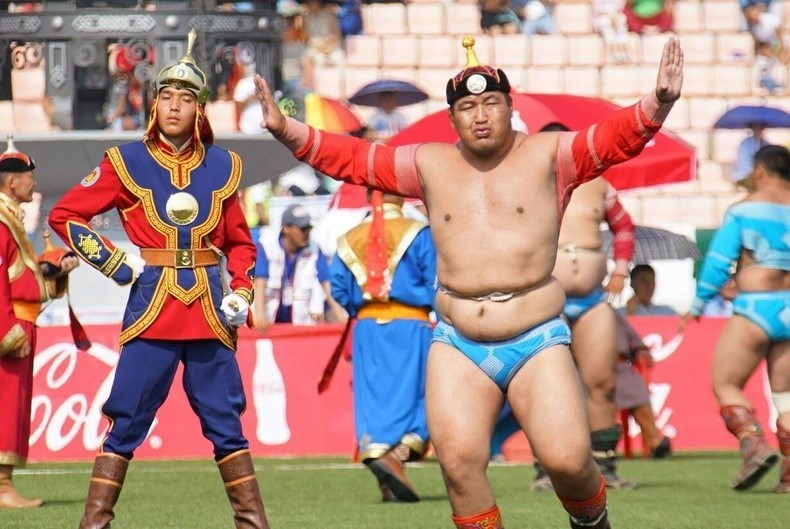 Archery: In archery, where women are allowed to participate, from 10 July to 11 July there will be three competition rounds with a final round and award ceremony in the central stadium on 12 July. Mongolian archery competitions date back to the 11th century. The riders, dressed in traditional costumes, use bows made of horn, bark and wood. The arrows with a length of about 75 cm are made of willow branches and vulture feathers, while the arrowhead made of bone and brass. As targets at the Naadam Festival stacked cylindrical baskets of sheep intestine each 8 cm in height and diameter serve.
Archery: In archery, where women are allowed to participate, from 10 July to 11 July there will be three competition rounds with a final round and award ceremony in the central stadium on 12 July. Mongolian archery competitions date back to the 11th century. The riders, dressed in traditional costumes, use bows made of horn, bark and wood. The arrows with a length of about 75 cm are made of willow branches and vulture feathers, while the arrowhead made of bone and brass. As targets at the Naadam Festival stacked cylindrical baskets of sheep intestine each 8 cm in height and diameter serve.
In the first round, 20 arrows are fired at a four-meter-long and 48 cm high wall of four stacked rows of baskets, in the second round then 20 arrows on two rows of a total of 30 stacked baskets. The distance from the finish for male competitors is 75 m and 60 m for women.
The judges stand beside the goals and announce the result by the loud singing of traditional melodies and with raised hand. The participant who most often meets the goals is the winner of the contest merge. 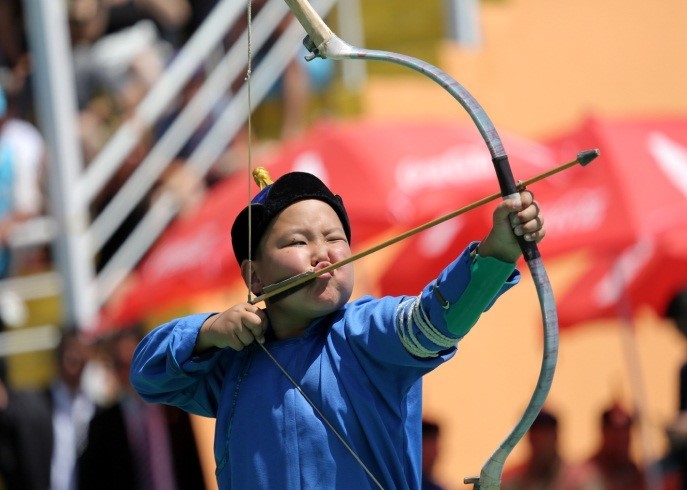
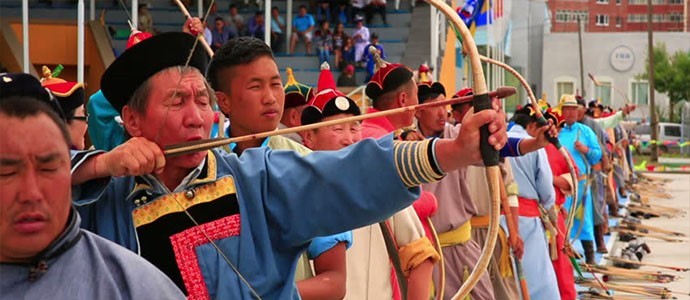
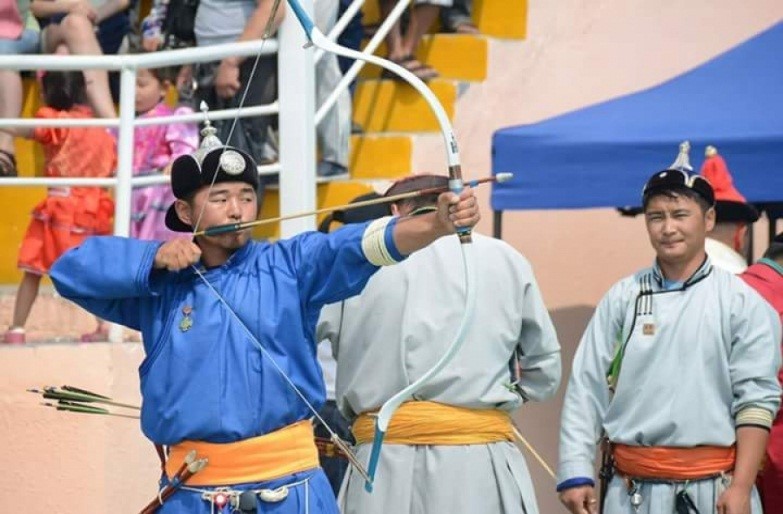
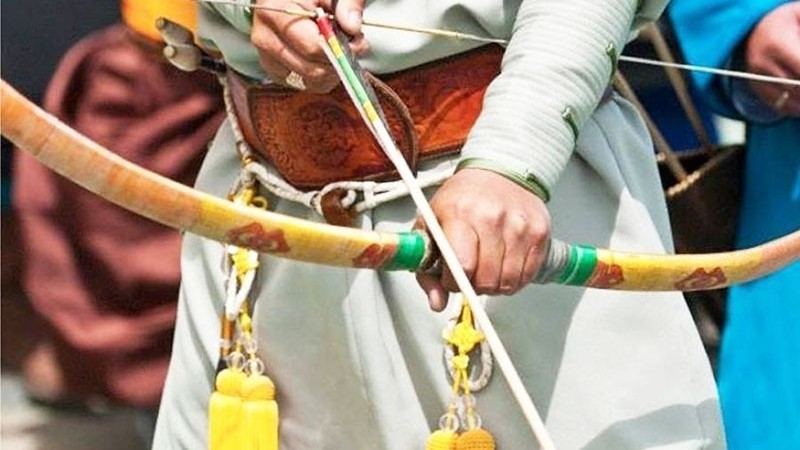
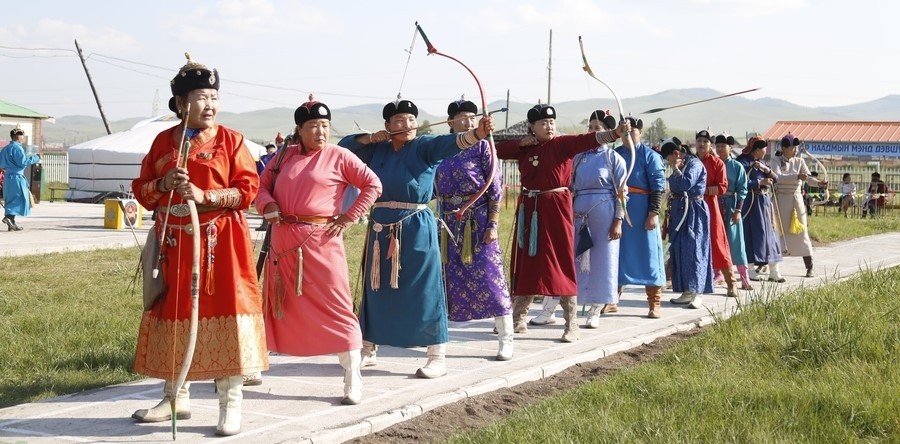 Horse racing: In the horse races, children compete against each other on horses aged between two and six, and there is also a race for stallions. Depending on the age group, different distances are ridden, at the biggest race at the Naadam festival just outside of Ulaanbaatar over a full 30 km. The horses that have won will be celebrated in the central stadium on July 12th, after which the children's jockeys will receive gifts from the hand of the Mongolian president.
Horse racing: In the horse races, children compete against each other on horses aged between two and six, and there is also a race for stallions. Depending on the age group, different distances are ridden, at the biggest race at the Naadam festival just outside of Ulaanbaatar over a full 30 km. The horses that have won will be celebrated in the central stadium on July 12th, after which the children's jockeys will receive gifts from the hand of the Mongolian president.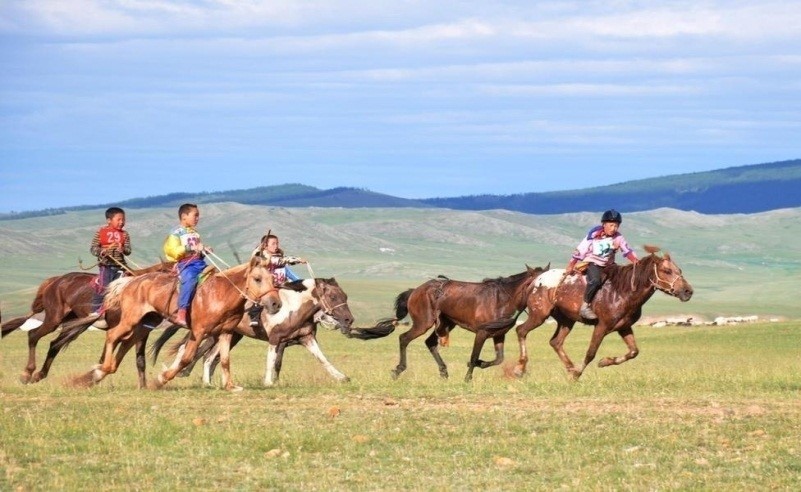
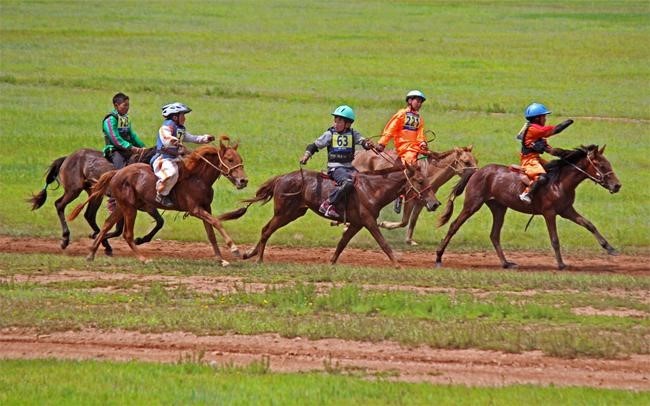
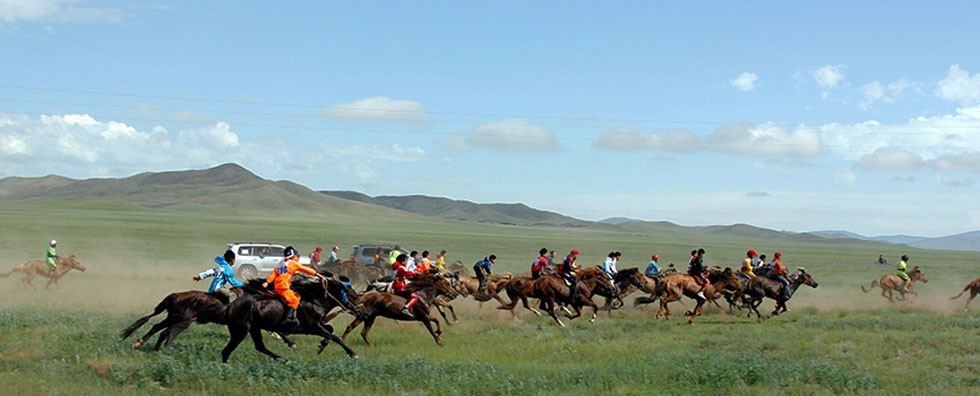
The Feast-1000 camels
Has anyone heard that the festival is for camels? Yes, there is such a festival in Mongolia. Here the camels are a breeding and livestock for the Mongols. Since 1997, the camel festival is held annually by the travel organization "Tumen Temee-10 thousand camels". The organizers want to protect the increasingly rare Mongolian two-headed camels and support the lives of the nomads. It also aims to raise awareness of the environment and develop tourism in Mongolia. The "Ten Thousand Camels" Festival is the first and one of the largest of the Mongolian festivals in Mongolia. The festival opens up new opportunities for camel breeders, who are very dependent on their camels and their products. The festival has gradually become one of the most important events in the Gobi region. As part of the camel festival various competitions take place. For example, the most beautiful couple can be chosen, there are camel polo and exhibitions of dairy and wool products from camels. In addition, numerous musicians gather to give folklore concerts. If that is not enough for you, you can get to know the many different camel races and be convinced of the unbelievable speed and agility of the animals. Take part in the oldest event in Mongolia. Take the chance to discover the special Mongolian cuisine while enjoying the hospitality of the nomads. The festival always takes place at the beginning of March in Bulgan Sum (administrative unit Umnugobi province). 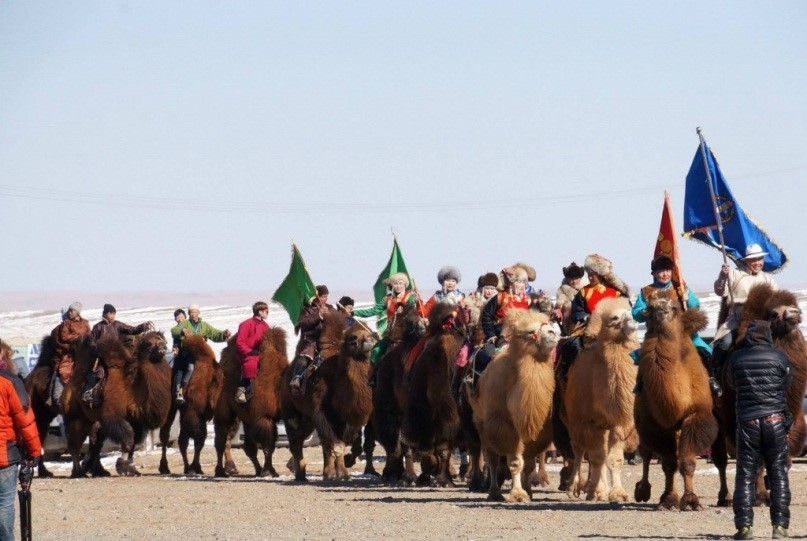
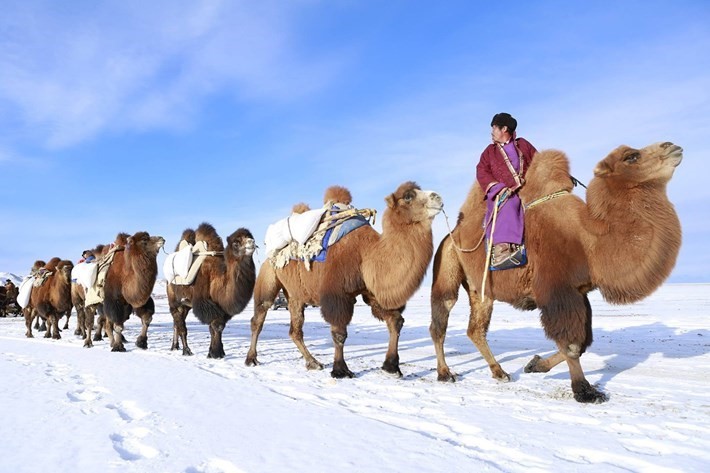
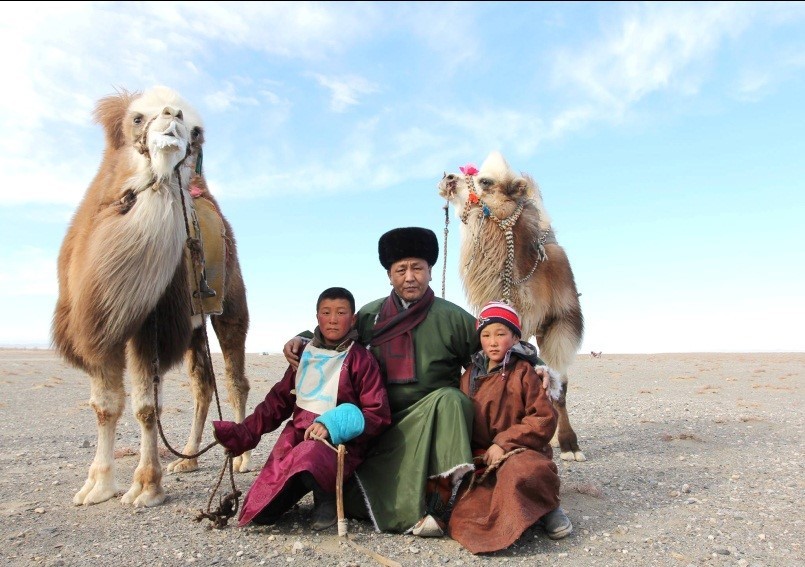
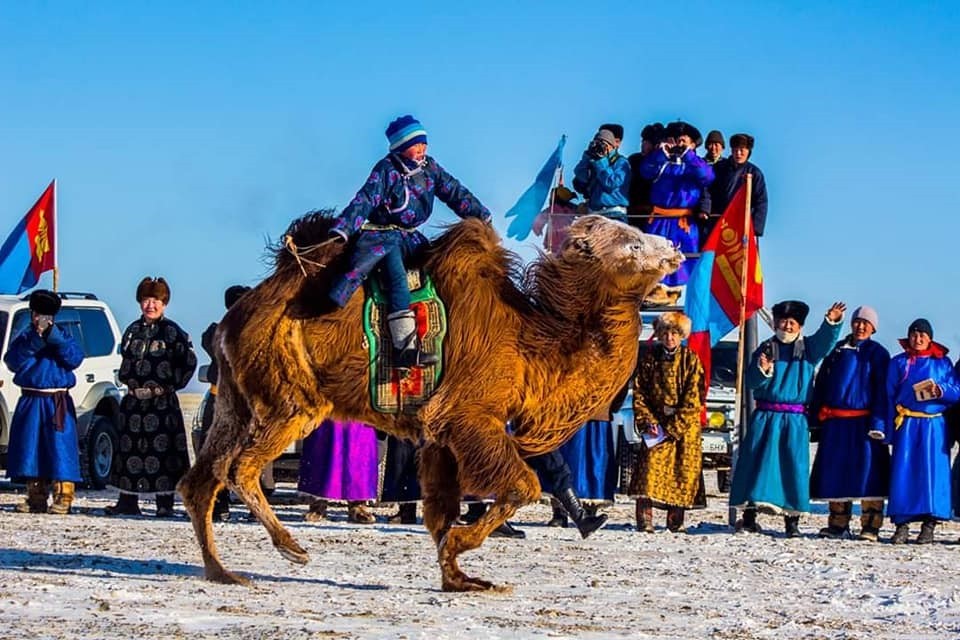
The Golden Eagle Festival
There are many species of eagles all over the world. Of these, Golden Eagles are often seen in Mongolia. To preserve and spread the old tradition of eagle hunters, the Eagle Hunters Association has been organizing the annual "Golden Eagle Festival" in September or in the year 1999 October in Bayan-Ulgii province, where the border zone of Mongolia, China, Russia and Kazakhstan is located.
The Mongolian Kazakhs, who are a minority, live here with Turkish descent and have their home in the far west of the country on the breathtaking Altai Mountains. For this reason, not only Mongolian, but also Kazakh eagle hunters are part of this festival. Eagle hunting is already recognized as a UNESCO World Cultural Heritage. The festival will be attended by around 100 eagle instructors and will measure the skill of their eagles in exciting competitions. The highlight of the festival, however, is the hunt with the eagles, which were trained by the hunters. This colorful event includes many traditions of the Kazakhs. Also, cultural programs, such as Kazakh folklore in the evening, a competition for the most beautiful couple and much more are planned for the audience. The festival lasts two days and takes place during the cold months, as it is impossible to hunt with the eagles in the warm season. 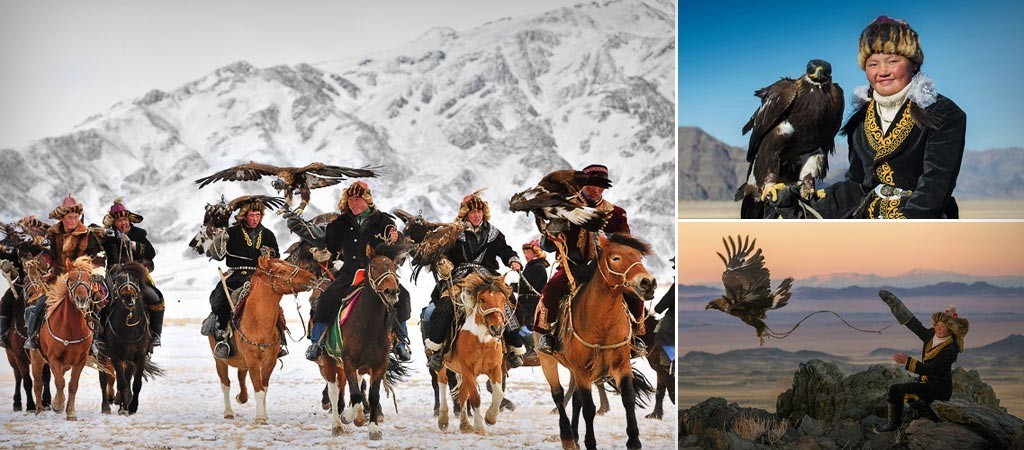
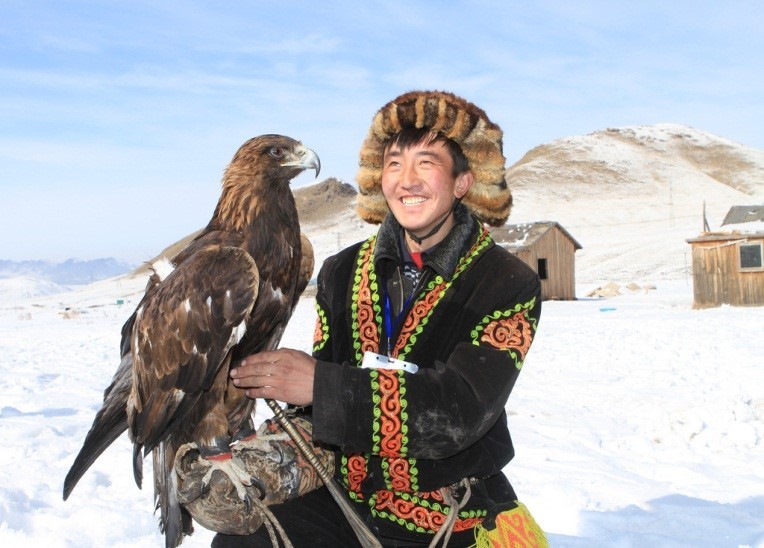
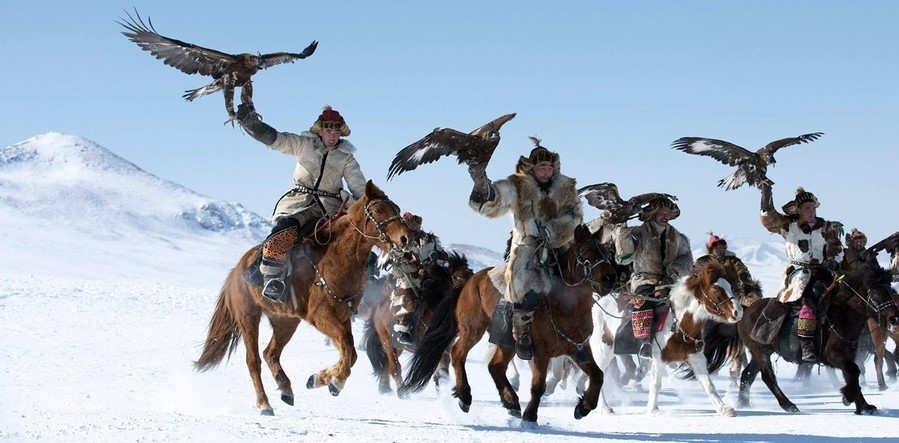
Ice festival on the lake "Khuvsgul".
What an amazing natural phenomenon. Since 2002, every year in March, an event ice festival takes place on the frozen lake "Khuvsgul" in northern Mongolia, organized by the local tourism community. The festival is not only of beautiful scenery in Khuvsgul, but also of the famous blue sky of Mongolia. Other activities that take place during the Mongolian festival include: Sumo wrestling on the ice, ice skating, dog sledding, sleigh rides, cross-country skiing, ice art exhibitions and competitions between local teams for spectators. Year after year, international visitors come to the festival to take scenic pictures and experience the winter of Mongolia and nomadic culture. It is worth to visit there. 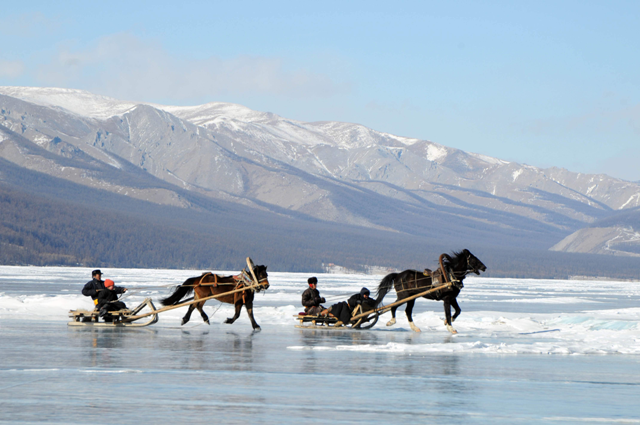
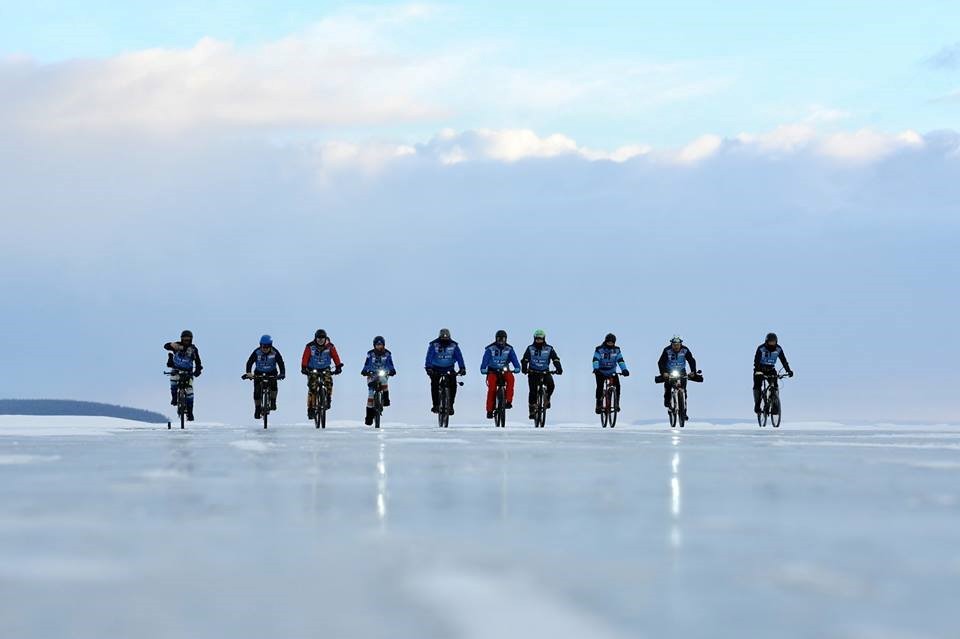
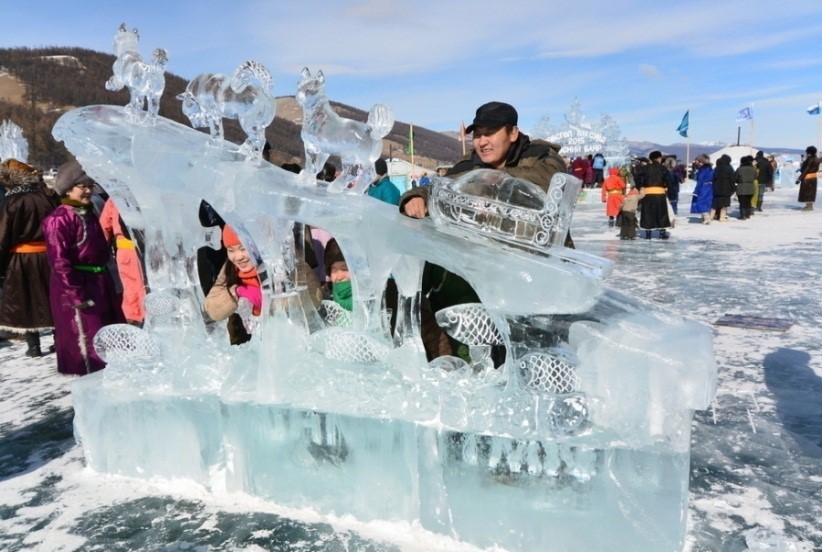
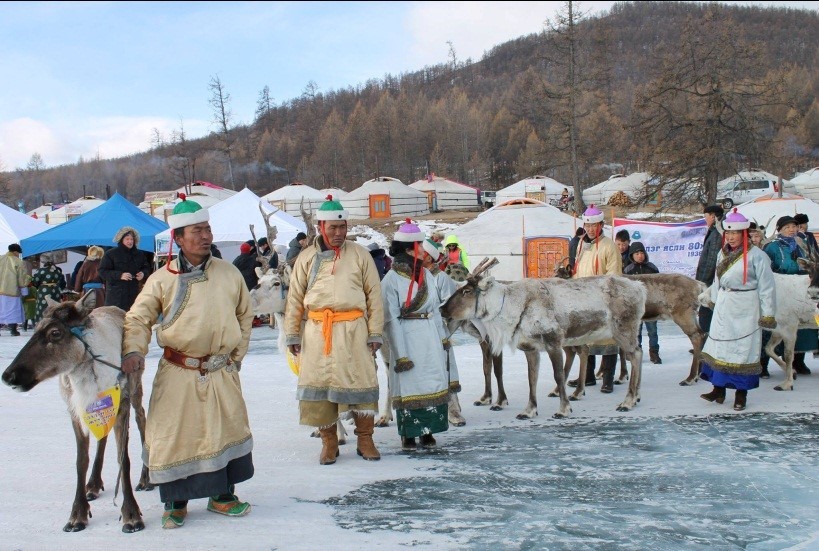
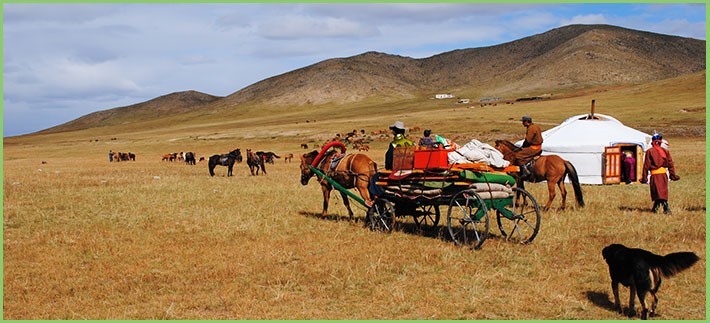
Nomadic life thrives in summer and survives in winter. Considering climatic conditions, especially during winter, such lifestyle may seem to the outside world to be a very hard way of living. However, Mongolians have developed for centuries such qualities as strength and resilience that are essential for survival in this harsh nature, which is their cherished homeland.
The number of nomads has significantly decreased over the last years. Nomads move to the capital city being compelled by the necessity to search for means of subsistence or attracted by city lights and perceived advantages of urban life. After the last terrible winters many nomadic families lost all their herds that were the source of living. Such situation requiring an emergency aid resulted in large rural-to-urban migration, especially from the west of the country, driving nomadic herders as well as stockbreeders from small rural towns towards the suburbs of the capital city.
Traditionally, Mongolian nomads raise 5 species of livestock known as the 5 muzzles: horses, cows or yaks, sheep, goats and camels. Reindeers are raised by the Tsaatan people who live in the northwest areas around the lake Khovsgol bordering the Russian Siberia.
Mongolia is the land of the horse. Any nomad can ride as well as he or she can walk or run.
Small Mongolian horses are incredibly resistant. They live all year around in semi-wild herds, gathered only for the draft and the capture. They are partially watched over by herdsmen to defend only against the wolves in winter.
Horses are definitely on the high when they are involved for the annual race of Naadam. Ridden by young racers, they demonstrate all their strength and beauty for the pride of their owner and breeder and the glory goes to the horse and the owner than to the particular rider.
Yaks and cows bring meat, leather and milk, which is used for making a variety of dairy products such as yoghurt, cheese and Aaruul (or dried cheese) that constitute the main diet of nomads during the summer months. Aaruul, which represents cheese balls of different shapes and sizes dried on the roof of the ger, is especially popular and is consumed all year round. 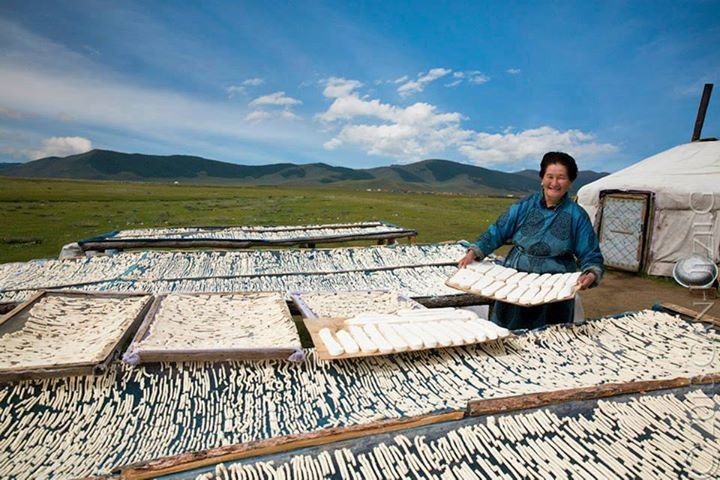
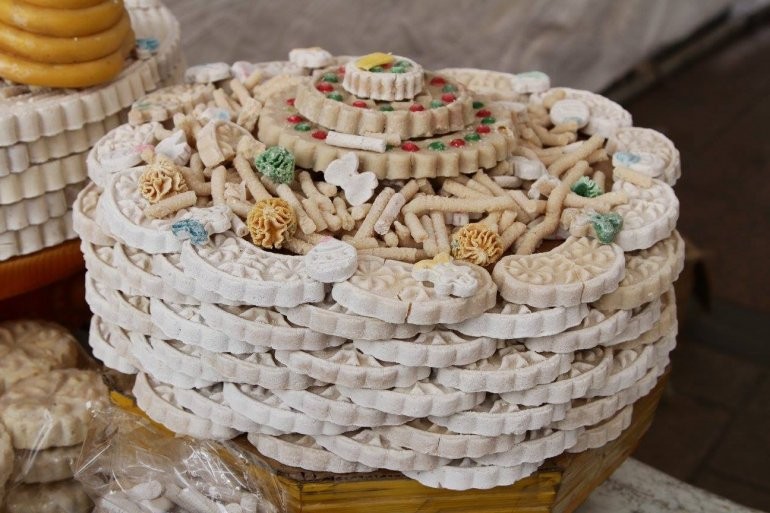
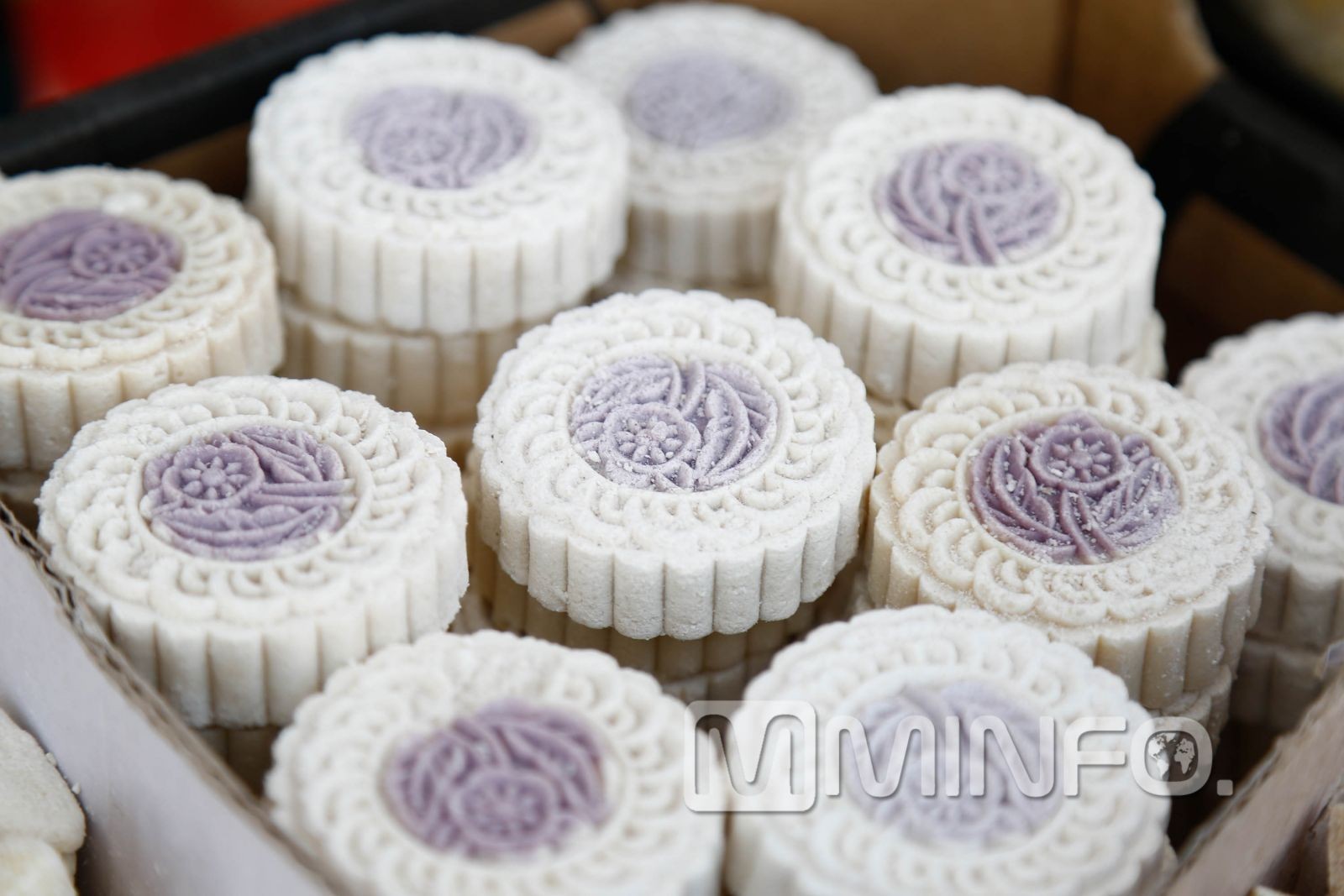
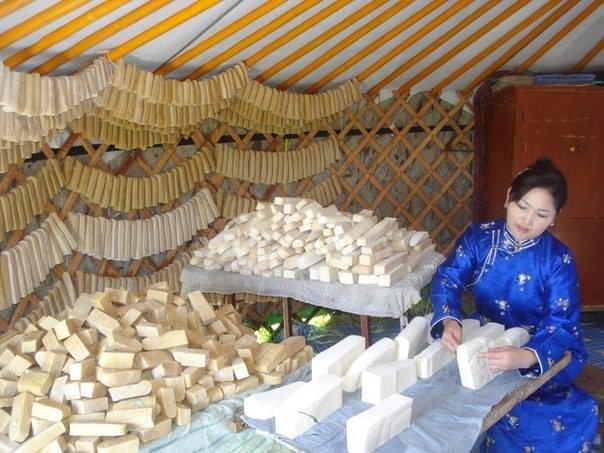
Sheep is the most universal animal used for meat and milk, the basic food of nomadic lifestyle, skins and wool for clothing and felt for ger covering.
Goats are more difficult to raise than sheep, but they are appreciated for their meat and especially cashmere, goat’s down, one of the highly valued natural fibers. Mongolia is one of the largest producers and exporters of the finest quality cashmere in the world.
Two-humped Bactrian camels are used in Gobi for meat, milk, wool as well as for riding and as a carrier for long distance movements.
Nomadic families often gathered in groups move generally in the radius of 50 to 100 kilometers, at least twice a year, in spring (May) and at the beginning of winter (October). However, more significant displacements are sometimes necessary in the search of better pastures. Uvuljuu or winter camps are located in areas that are naturally sheltered from wind and are equipped with barns for the animals to stay for the night.
Nomads devote all of the day to caring after their animals – watching over, milking, shearing, or combing – to produce felt and felt clothes, cheese and other dairy products. Horses are raised and looked after by men but are milked by women.
Nomads use a pole-lasso or Uurga to gather the herds and to capture the horses. Mongolian Gers The ger, the traditional Mongolian home 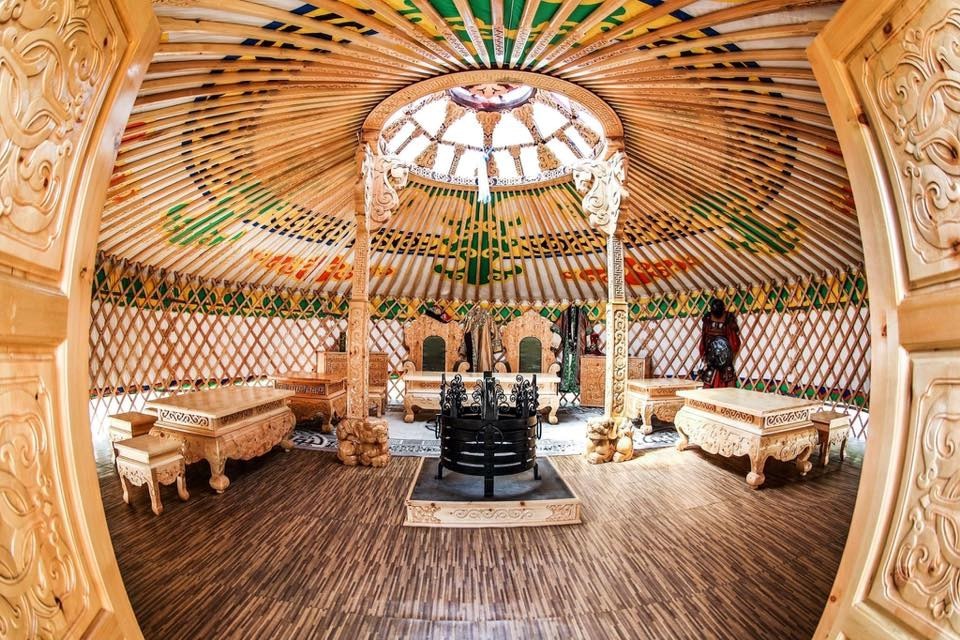
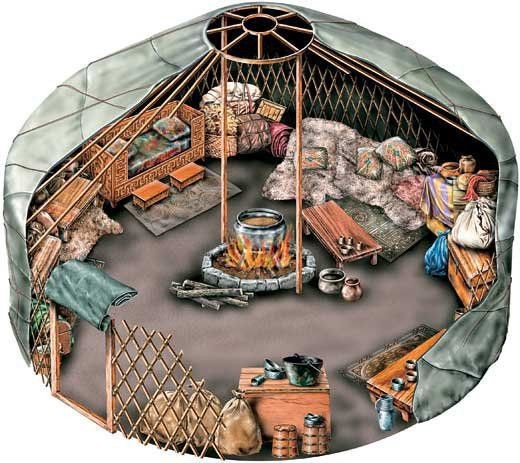
Yurt is the usual term for the Mongolian felt tent or Ger, but this word is not very much appreciated by Mongolians themselves because it is of Turkish origin and was used by the Western invaders and the last of them - the Russians.
The majority of Mongolians in rural areas, even Mongolians in urban downtown, live in these comfortable tents that nowadays are sometimes very well equipped with all "modern amenities". Ger is the truly universal traditional dwelling that has been adapted over the centuries to the realities of nomadic life in harsh steppes. It is incredibly warm in winter and cool in summer and is resistible to powerful winds without being fixed in the ground. It is easily dismountable and transportable that is so important for nomads during their regular migrations.
Ger consists of a wooden frame and is covered with felt. It weighs from 150 to 300 kgs and can be assembled and dismantled in approximately 2 hours. The interior organization of ger is identical everywhere: the door faces the south, the men’s place is in the west part, the north side is the place for honoured guests or old people as well as the place for the family altar, the east side is the women’s territory. The stove occupies the center of the ger. 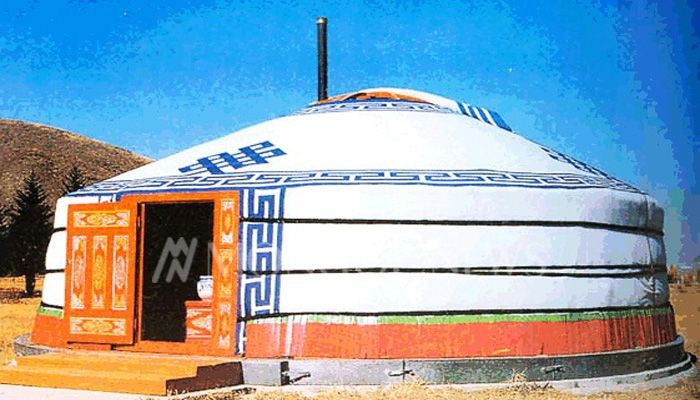
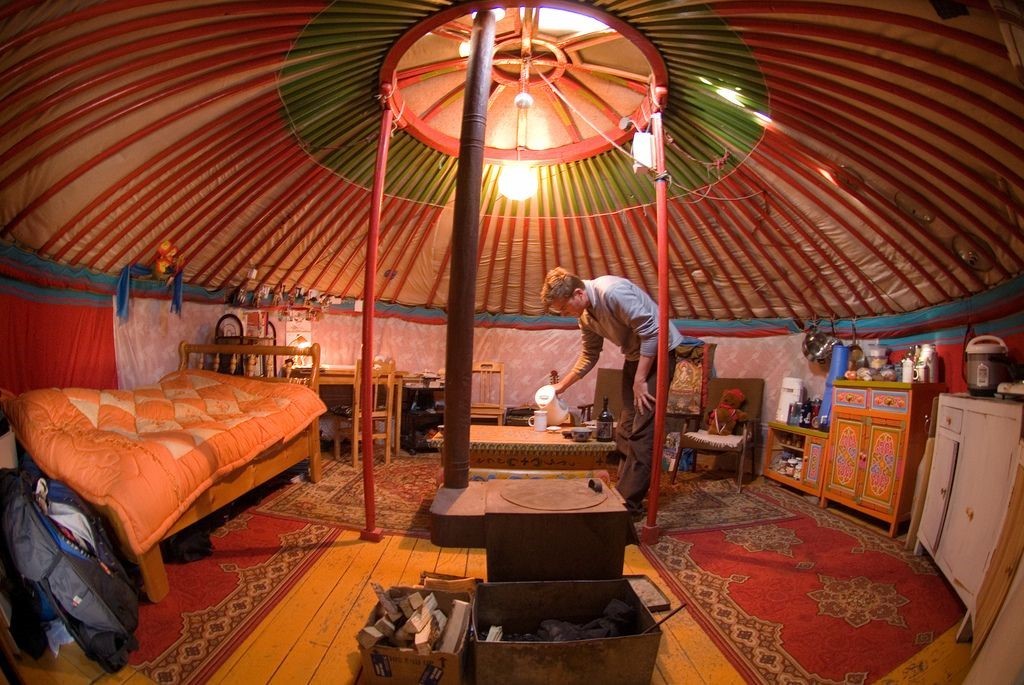
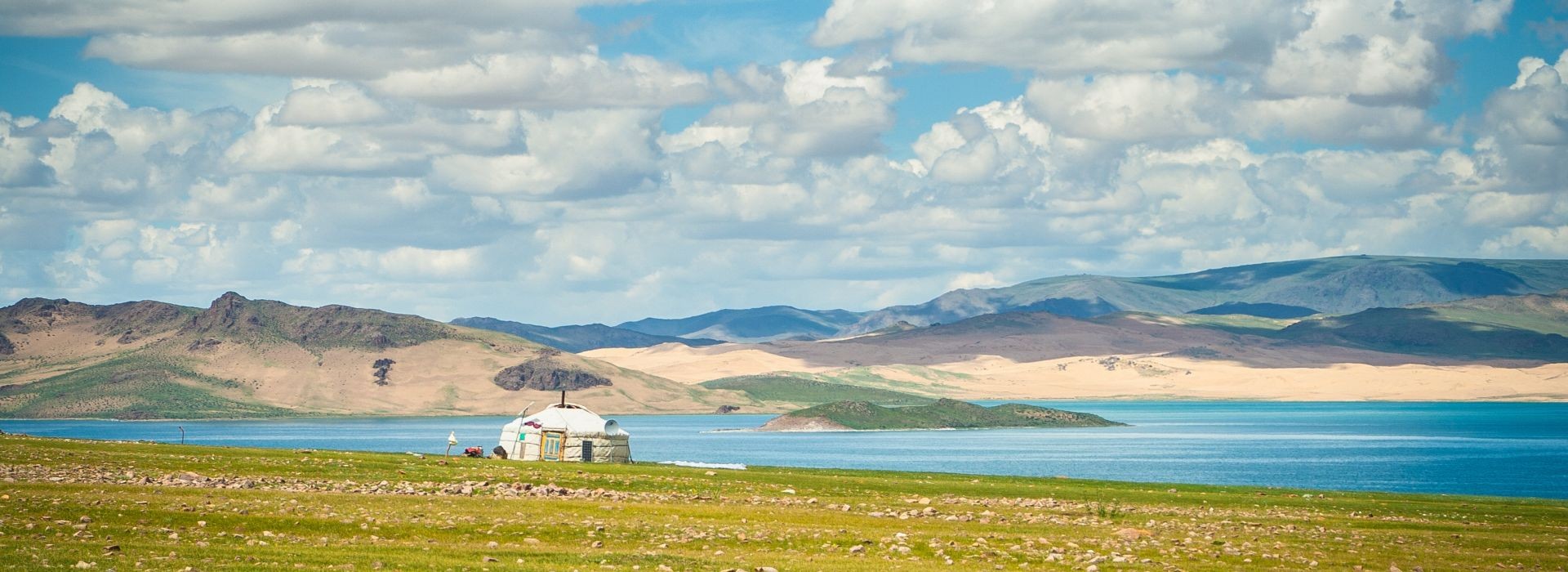
1. Serenity and landscapes
Mongolia is renowned for its unforgiving yet stunningly beautiful landscapes. With dramatic mountains, vast grassy meadows, towering sand dunes and a startling silence in the open air, you can understand why Mongolians call their homeland the “land of the blue sky”. In the evening, as the sun bows down to the moon, the night sky reveals an incredible display of stars that seem close enough to touch!
2. Wildlife
With reindeer roaming the north, golden eagles soaring in the west and camels wandering the deserts of the south, travelers often pick which regions to visit based on the wildlife they hope to encounter. The mountains of the southern Gobi are also home to the rare and incredibly beautiful snow leopard. Intrepid travelers can trek through their natural habitat in the hopes of spotting these elusive creatures.
3. Nomadic culture
While half of the Mongolian population lives in the capital, the rest lead a peaceful nomadic life, herding cattle and wildlife as the seasons change. A truly once-in-a-lifetime experience is to live alongside nomad families, getting up with them in the morning to milk the cows, collect water and help cook the day’s meals. It’s a humbling and enlightening experience that takes you back to what life is really about.
4. Hospitality
Despite living simple lives, Mongolians are renowned for their hospitality. If nomads have a spare ger – a tent made from felt and wood – they will stay in it while hosting visitors in the main ger. They are incredibly welcoming and very proud people, and are always wanting to show off their wonderful culture.
5. No other tourists
With a population of just under three million – half of them in Ulaanbaatar – seeing other travelers (or even another person) when out in the wilderness is unlikely. Still, tourism in Mongolia is on the rise, with increased direct flights from Western countries, so be sure to visit soon to have this empty and untouched land all to yourself.
6. The Gobi Desert
Seeing the world’s fourth-largest desert up close is reason itself to visit Mongolia. From wild roaming camels to the views at the top of the giant “singing sand dunes” of Khongoryn Els, there’s a lot to take in. Be sure to visit the Flaming Cliffs where dinosaur fossils have been found, and make sure you fit in a camel ride for an unforgettable desert experience.
7. Unique cuisine
While international dishes are available in Ulaanbaatar, the rural nomads rely on their livestock for meat and dairy produce, which makes up the bulk of their diet and helps them survive the harsh winters. A fun way to spend an afternoon is learning to make Mongolian dumplings with a nomad family; vegetarians needn’t worry as alternative dishes can be arranged.
8. Mongolian history
Genghis Khan, or Chinggis Khan to the locals, is known to most of the world as a ruthless warrior who founded an empire stretching from Asia to Eastern Europe. In Mongolia, though, he is viewed as the father of the nation. His name adorns many businesses in Ulaanbaatar and there is a 40m-high silver statue of him riding his horse close to the capital. Travelers can climb all the way up the horse’s neck for views across the great Khan’s land.
9. Eagle hunters
Selecting chicks straight from the nest, the Kazakh people of western Mongolia, known locally as Berkutchi, train the majestic Golden Eagle to hunt prey as large as wolves. Visit the far western Altai Mountains in September and October to witness the incredible Kazakh Eagle Festival that’s been a tradition for centuries.
10. Naadam Festival
The wildly popular Naadam Festival celebrates important and traditional aspects of being “manly” in Mongolia. The festival takes place all over the country in July, with the largest gathering in the capital. Men compete in three sports – horse-riding, wrestling and archery – and children get involved too, with horse racing across a 20km course.
